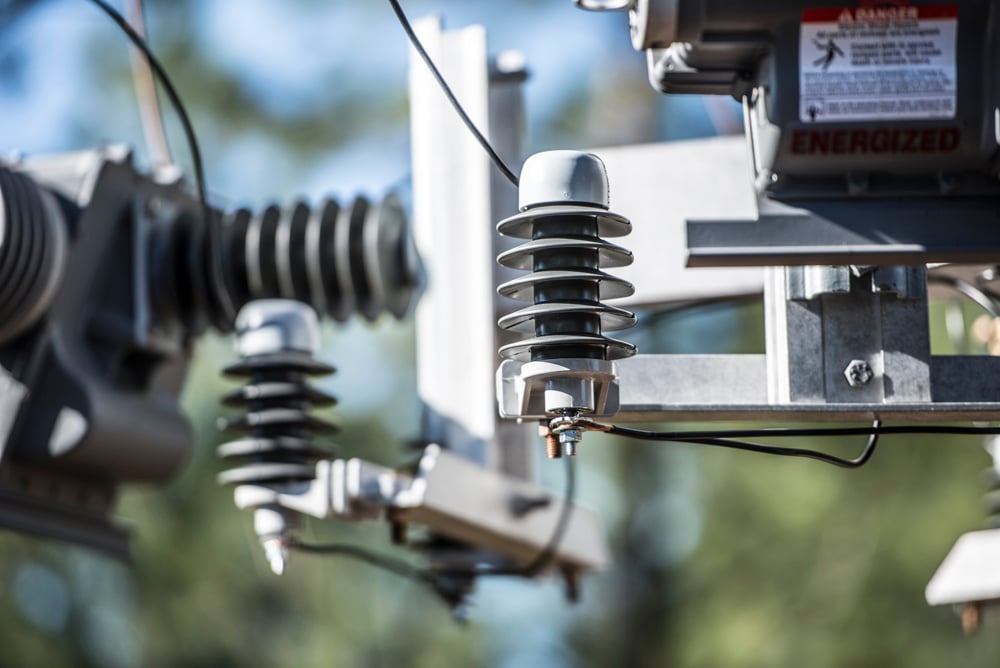It’s a commonly held belief that the single most important characteristic for insulating materials is hydrophobicity, the ability to shed water or cause water films to bead, breaking up the potential leakage current path. Because the polymer housing is the primary defense for system critical distribution equipment, there are several other important polymer characteristics worth taking into consideration.
The combination of characteristics listed below can greatly contribute to the long-term performance of the products in service.
Characteristics of an Ideal Polymer:
- Resistance to tracking and erosion
- Ultraviolet (UV) resistance
- High Mechanical strength
- Low moisture permeability
- Short and long-term hydrophobicity
Resistance to Tracking and Erosion
An important characteristic of a polymer compound is its ability to resist tracking and erosion especially under contaminated conditions. With high enough contamination levels, polymer sheds can begin to track and form an electrically conductive path along the surface. The presence of this new conductive path defeats the intended purpose of the insulating material and can lead to a line-to-ground short. These high leakage currents combined with associated dry band arcing can severely damage the polymer surface in the form of erosion. Dry band arcing generates ozone, high temperatures and UV radiation exposure on the polymer surface. ESP™ does not track. The EPDM base, when exposed to high temperatures, will revert to a gaseous state, leaving no conductive residue. This property will prolong its service life regardless of the level of hydrophobicity.
UV Resistance
Polymer devices are exposed to UV in the form of sunlight, corona and dry band arcing which can cause changes on the surface. In the case of ESP™, a light chalking develops during this process, which serves to protect the underlying substrate from severe UV damage.
High Mechanical Strength
Distribution products are exposed to a high level of mechanical stress during installation and service. It is essential that the polymer material be robust enough to maintain mechanical integrity. Damage to housings in arresters for example could lead to moisture ingress and ultimately an electrical failure. Additionally, utilities around the world have reported instances of damage to polymer insulation from birds pecking at the polymer insulation. EPDM based materials are significantly stronger mechanically and proven to be more resistant to damage from birds which can be a major issue for utilities.
Low Moisture Permeability
Low moisture permeability for arrester housings is important because of the frequency of exposure to rain and humidity for these products in the field. Moisture ingress is the most common cause for arrester failures. The fillers included in the ESP™ compound prevent buildup of moisture within the housing by releasing water over time.
Short and Long Term Hydrophobicity
Hydrophobicity is the ability to bead water which can reduce electrical activity on the surface. This property is mostly valuable to polymers like silicone rubbers which depend on low surface tension to withstand tracking and erosion. Data and field history show prolonged exposure to UV and contamination can significantly degrade polymer surfaces, reducing the hydrophobic properties significantly or completely. Temporary loss in surface tension can leave some polymer materials vulnerable to tracking before hydrophobic properties are regained. The ideal polymer however would need to have a permanently hydrophobic surface or have a high level of resistance to leakage currents. ESP™ displays characteristics of hydrophobicity with the addition of silicone to the compound, but the material does not rely on this characteristic alone to ensure long term reliability.
The Hubbell Difference
The original design goal for ESP™ was to meet or exceed the capability of existing porcelain designs in terms of resistance to surface leakage current and/or dry band arcing activity. The materials that have been developed by Hubbell have succeeded in achieving this goal. Without good performance in these key areas, the chances of field failures increase significantly.

